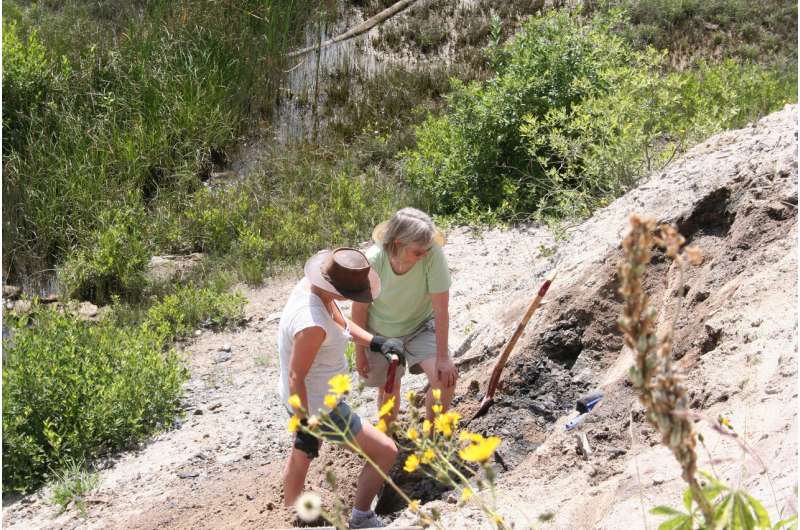October 24, 2019 report
Evidence that mercury from volcanoes contributed to end-Triassic mass extinction

An international team of researchers has found evidence that mercury from volcanic eruptions played a role in the end-Triassic mass extinction. In their paper published in the journal Science Advances, the researchers describe their study of plant fossils from 200 million years ago, and what they found.
The Triassic was a geological period in the Earth's history that began approximately 250 million years ago and ended approximately 50 million years later—it was notable because it started and ended with mass extinctions. Prior research has shown that the mass extinction that ended the Triassic involved a variety of elements that made life difficult—volcanoes erupting, global warming, excess carbon dioxide in the atmosphere and acidification of the oceans. Now, it appears there was another factor that contributed to the end-Triassic mass extinction—mercury.
The researchers note that mercury, which they describe as "the most genotoxic element on Earth," is released when volcanoes erupt and spew matter into the atmosphere. After some period of time, mercury makes its way back to the surface and causes problems. They have found evidence of this phenomenon 200 million years ago, adding to the factors that killed off approximately 40 percent of land animals and 30 percent of ocean creatures.
To find out if mercury might have been a contributing factor in the huge die-off, the researchers studied plant fossils from the time.

They report evidence of mutations in ancient ferns from that period. They also note that prior studies have shown that there were elevated levels of mercury in soil samples and marine samples from that period, as well. Mercury, they note, does not just kill a plant—it also leads to mutations, and it prevents plants from reproducing. The evidence suggests that mercury likely played a major role in the mass extinction that ended the Triassic—animals would have died directly due to mercury poisoning and indirectly from lack of food if the plants were dying, as well.
The researchers suggest that it is likely that release of mercury from volcanic eruptions played a large role in four of the five mass extinctions over the past 600 million years—that have been associated with volcanic activity.
More information: Sofie Lindström et al. Volcanic mercury and mutagenesis in land plants during the end-Triassic mass extinction, Science Advances (2019). DOI: 10.1126/sciadv.aaw4018
Journal information: Science Advances
© 2019 Science X Network





















